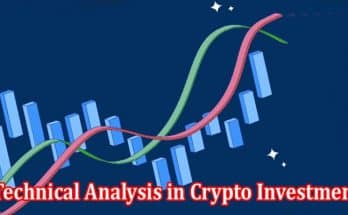The global economy of finance is undergoing a vast transformation with the upward push of decentralized finance (DeFi) and its intersection with centralized finance (CeFi). DeFi represents a brand new paradigm in economic services, supplying decentralized, permissionless, and not-to-forget-minimized solutions for lending, borrowing, trading, and asset manipulation. On the other hand, CeFi encompasses conventional financial institutions and services that perform within a centralized framework, together with banks, brokerage businesses, and centralized exchanges. The convergence of DeFi and CeFi is blurring the lines between conventional finance and crypto funding, creating new opportunities and traumatic situations for traders, establishments, and the broader economic environment. In addition, if you are looking for a website that helps people learn about investments by connecting them with investment education companies that can help them receive the right information, you may visit https://the-trade-lidex.com/.
Understanding DeFi and CeFi:
Decentralized finance (DeFi) refers to a set of monetary services and packages built on blockchain networks, specifically Ethereum, that are carried out without intermediaries or a centralized government. DeFi structures leverage smart contracts to automate economic transactions, permitting customers to access offerings together with lending, borrowing, buying, and selling, and yield farming right away from their digital wallets. DeFi protocols offer apparent, open-supply, and censorship-resistant alternatives to standard monetary offerings, attracting customers searching for more monetary autonomy, transparency, and overall performance.
Centralized finance (CeFi), on the other hand, encompasses conventional economic establishments and offerings that function within a centralized framework, controlled via a centralized government, such as banks, regulatory corporations, and financial intermediaries. CeFi systems facilitate monetary transactions, together with deposits, loans, and buying and selling, through centralized infrastructure and custodial services, offering clients the right to access liquidity, safety, and regulatory compliance.
The intersection of DeFi and CeFi:
The intersection of DeFi and CeFi represents a convergence of decentralized and centralized finance, wherein customers can enter into a hybrid environment of financial offerings that integrates the benefits of every paradigm. Some key factors at the intersection of DeFi and CeFi consist of:
Liquidity and Accessibility: DeFi protocols offer decentralized liquidity swimming pools that permit clients to get proper access to liquidity for getting, promoting, lending, and borrowing without relying on centralized intermediaries. CeFi systems, on the other hand, provide access to liquidity via centralized order books and shopping for and selling venues. The integration of DeFi and CeFi bridges liquidity at some stage in decentralized and centralized markets, supplying users with more potent liquidity and accessibility to economic markets.
Security and Compliance: While DeFi structures provide decentralized and consider-minimized solutions, they also face safety risks from clever settlement vulnerabilities, protocol exploits, and decentralized change hacks. CeFi systems, however, prioritize protection through centralized custody, regulatory compliance, and danger manipulation measures. The integration of DeFi and CeFi permits customers to take advantage of more potent safety and compliance capabilities, even when accessing decentralized monetary services.
Innovation and Collaboration: The intersection of DeFi and CeFi fosters innovation and collaboration among decentralized and centralized monetary ecosystems. CeFi structures are increasingly integrating DeFi protocols and offerings into their offerings, permitting clients to access decentralized liquidity, yield farming, and asset management without delay from centralized structures. Likewise, DeFi protocols are partnering with CeFi institutions to extend their patron base, enhance liquidity, and comply with regulatory requirements.
Challenges and Opportunities:
While the intersection of DeFi and CeFi gives high-quality opportunities for innovation and collaboration, it additionally poses disturbing conditions and risks that have to be addressed.
Regulatory Uncertainty: The regulatory panorama surrounding DeFi and CeFi stays uncertain and evolving, with regulators grappling to outline and modify decentralized financial services. Regulatory compliance is a key venture for DeFi and CeFi systems as they navigate complex felony frameworks and regulatory requirements all through jurisdictions.
Conclusion:
The intersection of DeFi and CeFi represents a transformative shift within the economic landscape, in which decentralized and centralized ecosystems converge to create new possibilities for innovation, collaboration, and economic inclusion. By bridging the distance between decentralized and centralized finance, clients can get the right of entry to a hybrid ecosystem of monetary services that integrates the benefits of each paradigm while additionally addressing the disturbing situations and dangers inherent in each. As the intersection of DeFi and CeFi continues to conform, it’s going to form the destiny of finance.

Caroline is a dedicated writer with a passion for keeping readers informed. Specializing in providing the latest news updates and unbiased reviews, she strives to deliver accurate and insightful content. With a keen eye for detail and a commitment to journalistic integrity, Caroline ensures that her readers are always well-informed. Stay tuned for her latest articles to stay up-to-date on current events and trends.




